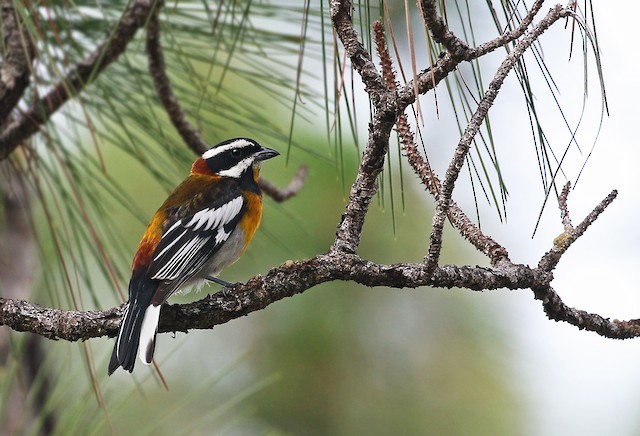Birdfinding.info ⇒ A form of Western Spindalis that is easy to find at most of the frequently visited sites in its small range. On Grand Bahama, reliable locations include the Garden of the Groves, Owl’s Hole, and Lucayan National Park. Even more common on Abaco, where it can be found almost anywhere.
“Dark-backed Spindalis”
Spindalis zena townsendi
Endemic to Grand Bahama and Abaco, where it is common in wooded habitats.
Has been found on a few occasions in southern Florida (but far less often than “Black-backed Spindalis”).
Identification
Male is distinctive but very similar to the other Bahaman spindalis, “Black-backed,” which overlaps with it on a limited basis. “Dark-backed” has an olive-brown back that is bordered by pale orange above and below—although this feature is concealed in some postures.

“Dark-backed Spindalis,” S. z. townsendi, male. (Garden of the Groves, Grand Bahama; June 12, 2017.) © Erika Gates
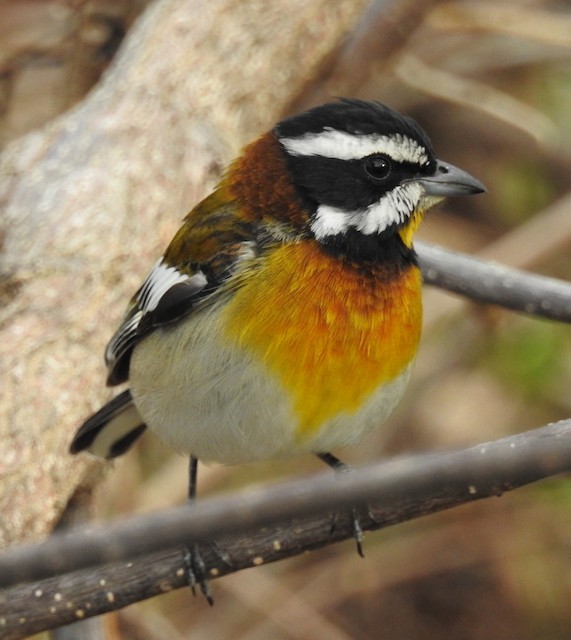
“Dark-backed Spindalis,” S. z. townsendi, male. (Garden of the Groves, Grand Bahama; November 6, 2016.) © Erika Gates
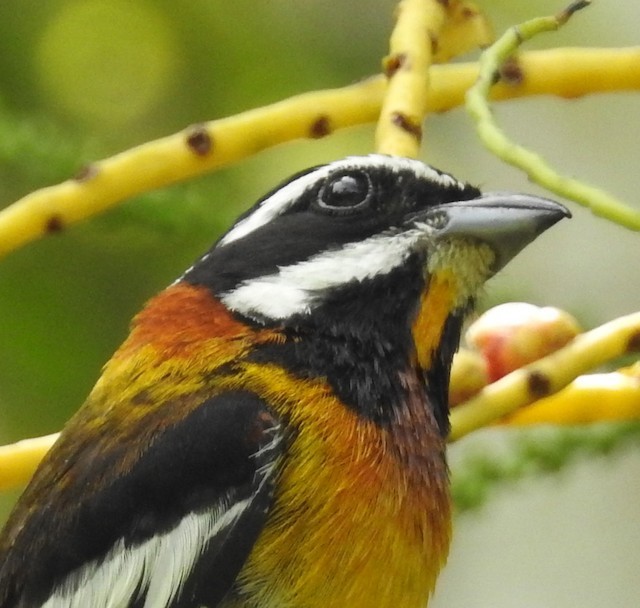
“Dark-backed Spindalis,” S. z. townsendi, male. (Garden of the Groves, Grand Bahama; June 12, 2017.) © Erika Gates
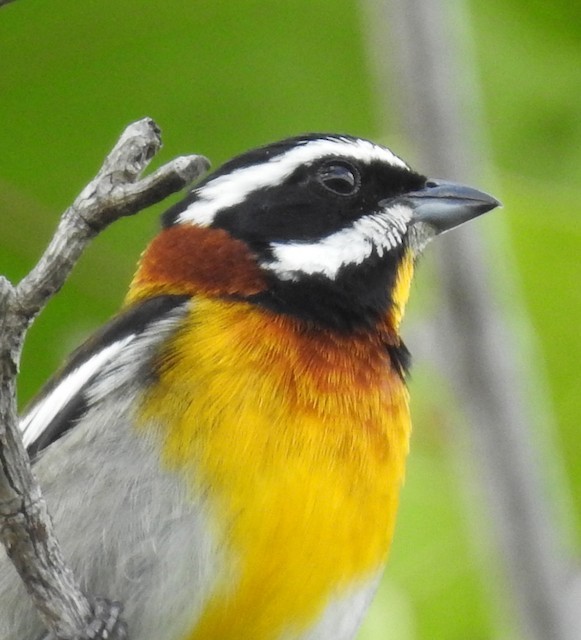
“Dark-backed Spindalis,” S. z. townsendi, male. (Garden of the Groves, Grand Bahama; May 23, 2018.) © Erika Gates
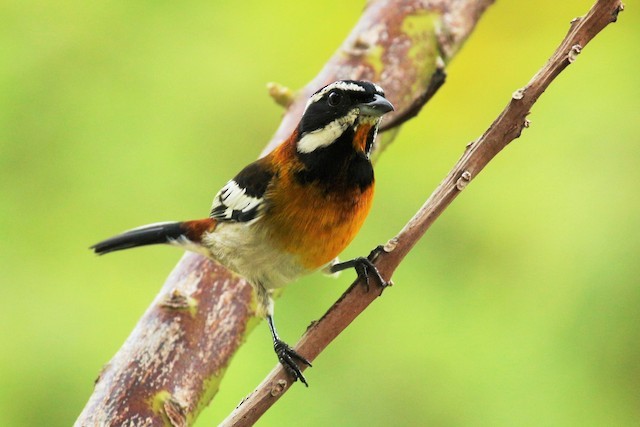
“Dark-backed Spindalis,” S. z. townsendi, male. (Casuarina Point, Abaco, Bahamas; December 9, 2015.) © Jason Estep

“Dark-backed Spindalis,” S. z. townsendi, male. (Casuarina Point, Abaco, Bahamas; December 9, 2015.) © Jason Estep
Female and immature are olive-gray overall, with a muted version of the male’s facial pattern, most noticeably a broad, pale whisker stripe. May be indistinguishable from female and immature “Black-backed.”

“Dark-backed Spindalis,” S. z. townsendi, female. (Abaco, Bahamas; March 25, 2006.) © Kevin T. Karlson
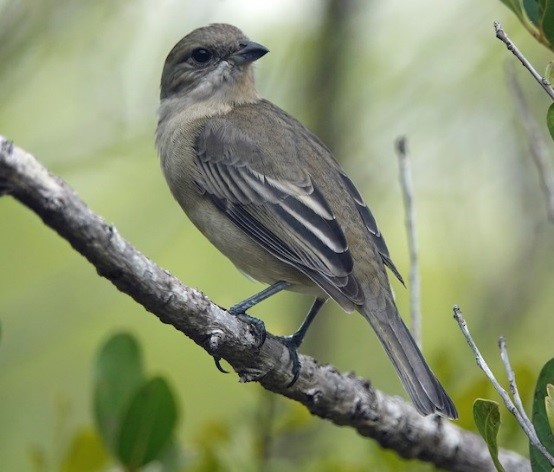
“Dark-backed Spindalis,” S. z. townsendi, female. (Manjack Cay, Bahamas; November 22, 2018.) © Jason Wilder
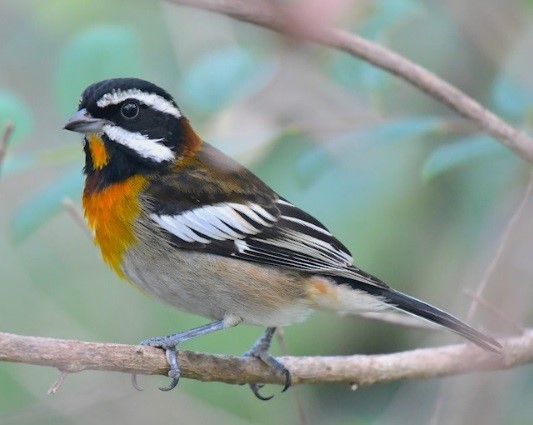
“Dark-backed Spindalis,” S. z. townsendi, male. (Treasure Cay, Abaco, Bahamas; December 30, 2017.) © Christopher Johnson

“Dark-backed Spindalis,” S. z. townsendi, male. (Garden of the Groves, Grand Bahama; November 8, 2018.) © Bridget Davis
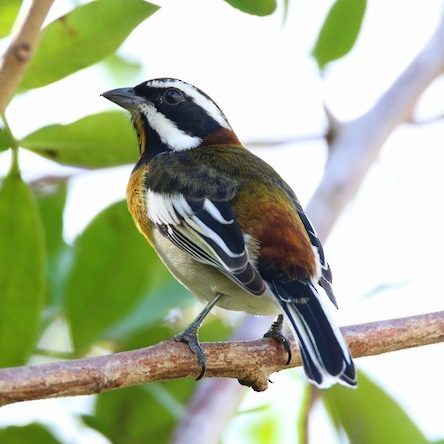
“Dark-backed Spindalis,” S. z. townsendi, male. (Garden of the Groves, Grand Bahama; January 11, 2018.) © Karmela Moneta
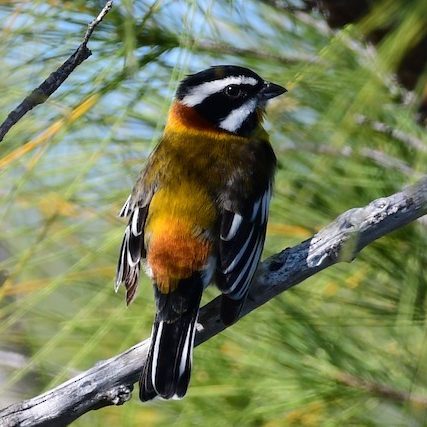
“Dark-backed Spindalis,” S. z. townsendi, male. (North Riding Point, Grand Bahama; December 13, 2017.) © Duncan Mullis
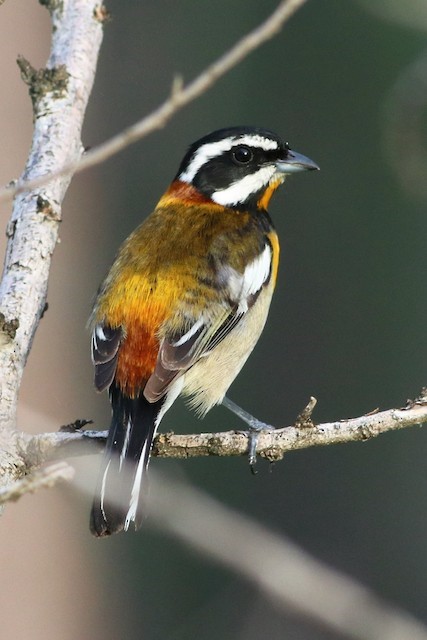
“Dark-backed Spindalis,” S. z. townsendi, male. (Blue Hole, North Abaco, Bahamas; May 25, 2017.) © Brendon Fogarty
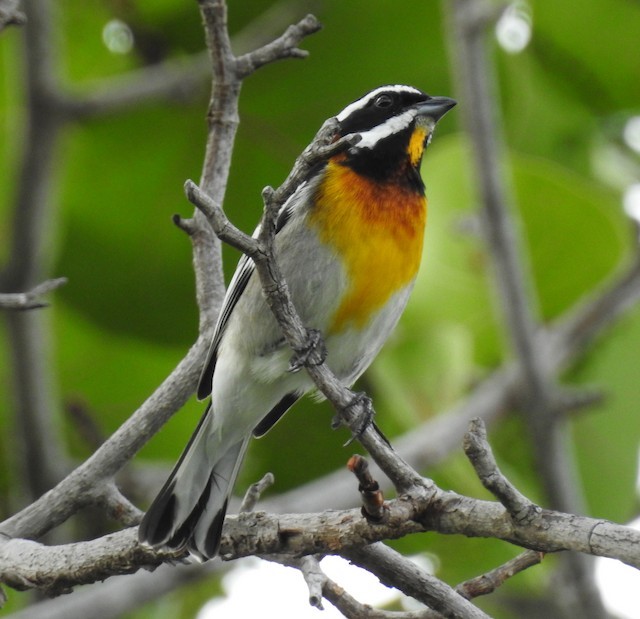
“Dark-backed Spindalis,” S. z. townsendi, male. (Freetown Farm, Grand Bahama; May 23, 2018.) © Erika Gates
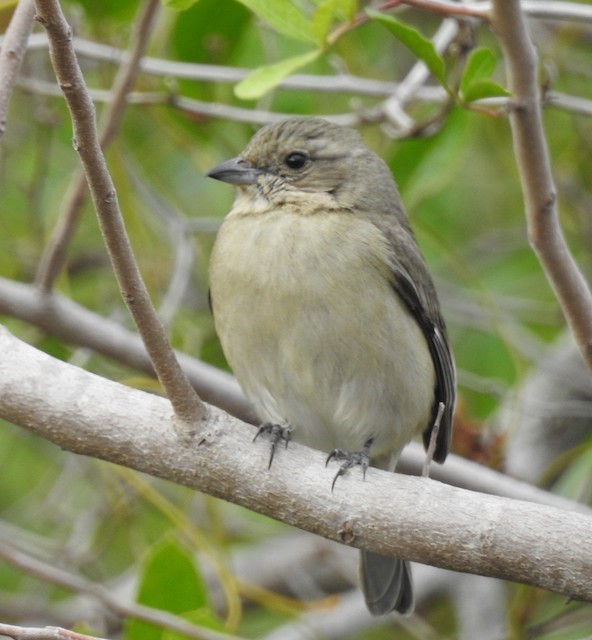
“Dark-backed Spindalis,” S. z. townsendi, female. (Freetown Farm, Grand Bahama; January 25, 2018.) © Erika Gates
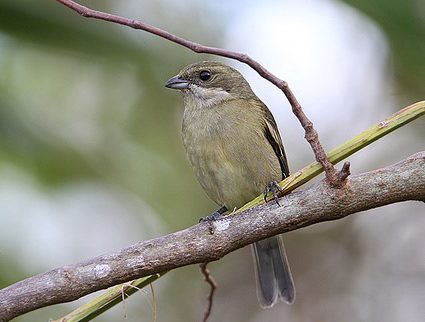
“Dark-backed Spindalis,” S. z. townsendi, female. (Old Citrus Farm, Abaco, Bahamas; January 7, 2013.) © Christoph Moning
Voice. Songs are vigorous, complex, rambling, chattering (reminiscent of some wrens and sparrows):Also rollicking chatter:Calls include thin, plaintive whistles:
Notes
Monotypic form, one of five potentially distinct forms of Western Spindalis. (Note that the name “Dark-backed Spindalis” is not in widespread usage. Authoritative sources that provide a common name for this form have called it the “Bahamas Green-backed Spindalis.” “Dark-backed Spindalis” seems preferable as it is less awkward and more accurate—the bird’s back is not green.)
Distinguishable from other forms of Western Spindalis based on voice and coloration. “Black-backed Spindalis” is clearly a close relative, and it is possible that these two could be considered a single species separate from the other forms of Western Spindalis.
All spindalises were formerly considered to be a single species, the Stripe-headed Tanager, S. zena.
References
eBird. 2018. eBird: An online database of bird distribution and abundance. Cornell Lab of Ornithology, Ithaca, N.Y. http://www.ebird.org. (Accessed December 8, 2018.)
Hilty, S. 2018. Western Spindalis (Spindalis zena). In Handbook of the Birds of the World Alive (J. del Hoyo, A. Elliott, J. Sargatal, D.A. Christie, and E. de Juana, eds.). Lynx Edicions, Barcelona. https://www.hbw.com/node/61832. (Accessed December 5, 2018.)
Howell, S.N.G., I. Lewington, and W. Russell. 2014. Rare Birds of North America. Princeton University Press, Princeton, N.J.
Raffaele, H., J. Wiley, O. Garrido, A. Keith, and J. Raffaele. 1998. A Guide to the Birds of the West Indies. Princeton University Press, Princeton, N.J.
